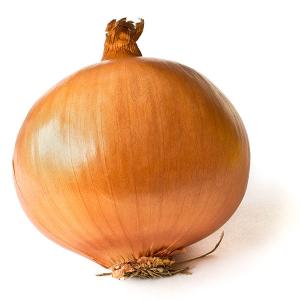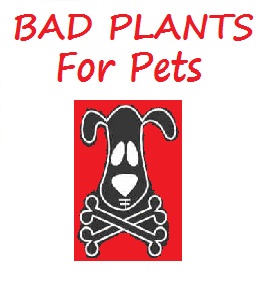Onion Is Poisonous To Pets

Grown intentionally for the home garden or occurring in the wild, Leek, Elephant Garlic, Wild Onion, and Wild Garlic; all members of the Allium species are toxic to pets. The vast majority of Allium species related pet poisonings come from varieties that were cultivated in the home or garden such as onion (Allium cepa), garlic (Allium sativum), chives (Allium schoenoprasum), and leeks (Allium ampeloprasum var. porrum). Toxic to both dogs and cats, the toxin ‘N-propyl disulfide’ (a colorless to pale yellow odorous liquid) is present in all parts of the plants and toxicity is not notably affected by whether the plant is consumed raw or cooked. Not just in the garden, members of the Allium species can commonly be found as a part of food toppings like pizza, mixed in sauces like spaghetti, and included in spice mixes commonly used on beef; all foods which many owners provide their pets in the form of scraps or as a treat. Cats are noted to have a much lower tolerance for the toxin than dogs, and many have been fatally poisoned with as little as 5 grams per kilogram of body weight (a little over a tablespoon). Members of the Allium species are also commonly found in the wild, and pose a threat to grazing animals like horses and cattle who may find it either sporadically or densely scattered throughout their pasture.
The primary toxin N-propyl disulfide, works in much the same way that the unidentified toxin from Red Maple does by causing oxidative damage to the hemoglobin of red blood cells reducing or eliminating their ability to carry oxygen from the lungs to the rest of the body. The end result is widespread cellular death in all organs of the body due to oxygen starvation. The medical term for this process of demise is hemolytic anemia; the red blood cells will actually rupture releasing their hemoglobin into surrounding plasma. As more and more red blood cells rupture, the total number available to transport oxygen to the vital organs of the body decreases creating a condition known as 'anemia' or too few red blood cells and less than a sufficient quantity of hemoglobin. Due to this deficiency in hemoglobin and red blood cells, anemia leads to hypoxia (lack of oxygen) in organs. Since cells depend on oxygen for survival, anemia can have a wide range of clinical consequences as oxygen deprivation causes various organs to shut down.
Dogs breed such as Akitas and Shibas with high red blood cell levels of reduced glutathione and potassium are especially at risk to the hemolytic effects of oxidants such as N-propyl disulfide.The effectiveness of treatment is going to depend on a number of factors to include the amount ingested, how long the animal has been ingesting the plant, and the current clinical signs the animal is presenting. In many dog and cat cases where the animal may have only just recently ingested the plant clinical signs may be absent, or may be limited to gastrointestinal upset, and the accompanying vomiting and diarrhea both of which will generally have a distinct garlic or onion smell to them. In most cases the animal will naturally expel the offending plant and make a natural recovery without the aid of veterinary treatment. Ensure that the animal is provided plenty of water, so as to avoid dehydration from vomiting and diarrhea. Is also advisable to keep a close eye on the animal to ensure that clinical signs are not progressing which would be indicative of a worsening overall condition.
In cases involving horses or cattle, where the animal is anemic from grazing on the plant for a prolonged period of time; the prognosis is considerably worse. Even with aggressive treatment, at the stage of advanced anemia the prognosis, at best, is guarded as organ damage may have already occurred. If the patient is suffering more advanced clinical signs then it is going to be important to monitor packed cell volume and kidney function. IV fluids are also recommended to provide support to the kidneys and prevent dehydration. In many cases a blood transfusion will be necessary in combination with drugs and supportive care. Due to the anemia reducing oxygen levels in the blood, treatment with 100% oxygen should also be considered.
Ascorbic acid (vitamin C) has also shown to be effective at reducing methemoglobin ( the oxidized form of hemoglobin that has a decreased affinity for oxygen) back to hemoglobin at a dose rate of 30 to 50mg/kg twice daily as part of the IV fluids. It was noted that it takes two doses to reach adequate blood plasma levels.Lastly and a bit less documented is the use of Oxyglobin (purified bovine hemoglobin) with blood transfusions. A treatment regimen that proved successful in two separate incidents involving severely anemic animals, one involving a miniature horse and the second a pony at Tufts University. Although no details of the specific treatment regimen are available Oxyglobin is an oxygen-carrying fluid that can provide much needed oxygen to cells until recovery is complete, or it could be used to stabilize the animal until a full blood transfusion can be provided. As stated at the beginning of this section, even with aggressive treatment the prognosis for animals that have ingested potentially lethal levels of Carolina Maple is guarded. In the event you notice your horse ingesting this toxic plant, stop them immediately, remove any excess plant matter from the mouth, seek veterinary care.




